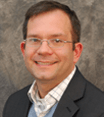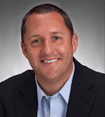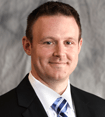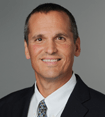2014 Mid-Year Executive Outlook
July 22, 2014
With July already upon us, that means the first half of the year is in the books and we’re heading into the homestretch of a very dynamic 2014! Taking a different tack to this summer’s outlook, we caught up with several rising young executives to assess their firm’s recent performance and growth prospects. In addition, each offered insights on their own unique leadership approach as well as the fundamental challenges with managing people and processes.
How has BBJ Group’s performance fared so far in 2014?
The year got off to a slow start, but should turn out well overall. We have significant backlog relative to past years, and have some additional opportunities that, if they pan out, should result in an optimistic outlook for 2015 and beyond. The silver lining to the recession is that we had to increase our focus on operational efficiency, reducing ARs, and expanding marketing efforts. We’re much more visible in the marketplace now, and can be more cost-efficient when we win new opportunities.
In what market or service areas are you seeing promising opportunities for growth?
Due diligence and remediation have been traditional strong-suits for us, but compliance and natural resource-related work have really come to the fore over the last few years. With respect to compliance, we’ve seen an increased interest in outsourcing EH&S activities as a cost-saving measure for clients.
Also, vapor intrusion projects are prominent for us right now. We have had appreciable experience with vapor intrusion projects in states which were “early adopters” with respect to vapor intrusion regulations (e.g., California, New York, and New Jersey). Now that Midwest and southern states, in particular, have adopted similar regulations, we are well-positioned to help clients nationally with vapor intrusion issues because of this prior experience.
How do you describe your leadership style?
Generally, I try to be more of a facilitator than a “top-down” manager. We have great people at BBJ Group, and it’s more efficient and beneficial to give them the space they need to do their job than to micromanage. These are folks with strong skill sets, so from a scientific perspective, they often have a better technical understanding than I do anyway. Consequently, the most important things I can do are to help make connections and provide perspective.
In my role, I have the advantage of seeing the organization from a higher elevation. Consequently, I can help connect our professionals to other BBJers that will have a good approach to a given issue or point them toward past projects where we have encountered a similar issue. On many projects, working with our project managers to consider multiple paths, and then identifying the one that fits best with the client’s overall strategy is my primary contribution.
What have you learned about attracting and retaining talent?
People want to feel like they are an important part of an organization’s future, and that they have some input into shaping that future. As such we’ve developed training programs that include a focus on “why we do things” in addition to “how to do things.” For growing professionals, it’s profoundly necessary to quickly develop an understanding of “why,” so that they can make better decisions and recommendations.
Also, we have implemented an “Initiatives Program” in which our professionals form teams to tackle a project of their own choosing of importance to them. In some cases these are inwardly focused operations-type undertakings, but in other cases they are outwardly focused philanthropic or business development activities.
What’s your biggest challenge as a leader?
Day-to-day activities can distract me more than I’d like in focusing on the urgent rather than the important. Important long-term activities, like talent development, have to be kept at the forefront, otherwise they can get overrun by the daily routine.
Fundamentally, people are the biggest asset any professional service firm has. At BBJ Group, I feel that identifying young professionals that fit well in our consulting approach is a true competency of the firm. Everyone needs to grow in their career, but those who are starting out require particular guidance and opportunity. Keeping their needs top-of-mind is critical, and prioritizing those needs ahead of other more visible but less important matters is always a challenge.
What are your plans this summer for rest and relaxation?
I’m a big Chicago White Sox fan, so my family and I will be going to Cooperstown to see Frank Thomas inducted into the Baseball Hall of Fame. I also recently finished an MBA at Northwestern University’s Kellogg School of Management, and I’m looking forward to spending my newly rediscovered free time with my kids doing things they like to do.
How has Cumming’s performance fared so far in 2014?
We are in growth mode with both top and bottom line growing in the lower double digits. We have made a focused effort on strategic expansion in the Mid Atlantic and North East over the last few years and the results are better than we planned.
In what market or service areas are you seeing promising opportunities for growth?
We are seeing significant growth and opportunity in the private sector. Our education and public focused efforts are stalled in 2014, but we see improvements in 2015 and beyond. With private work we see a tremendous amount of projects in Northern California, the Mid Atlantic, and the North East. This includes hospitality, multifamily, corporate expansion, manufacturing, and critical facilities.
How do you describe your leadership style?
I am open, direct, and inclusive. We have a lot of talented and smart people here and I always value their input.
What have you learned about attracting and retaining talent?
Culture is everything! You cannot hire and retain the best talent in a service organization without a clear, differentiating culture. This includes a clear vision, core values, and leadership that walks the walk. Without it, the only way to attract and retain people is through their wallets and that breaks down because there is no commonality or glue that keeps the team working toward a common goal in a common way.
What’s your biggest challenge as a leader?
Hiring and retaining great people that fit our culture. I spend a lot of time recruiting and communicating our vision. As a service organization the most important job I have is finding the best and brightest talent to support our clients and our growth.
What are your plans this summer for rest and relaxation?
I just spent a week visiting some state parks in Utah and Arizona with my family. It was beautiful and we enjoyed hiking, horseback riding, and canyoneering. We are fortunate to live in such a great country with so much beauty!
How has Gateway Engineers’ performance fared so far in 2014?
As we turn the page to the second half of the year, our performance has been very similar to 2013. Bookings, billings and revenue are all either flat or trending slightly above last year’s pace. We continue to focus on the efficient selling and executing of projects. We believe if we can do these two things proficiently while continuing to strengthen existing relationships and strategically expand our network, we will log another successful year.
In what market or service areas are you seeing promising opportunities for growth?
Our pipeline of new work looks very promising! We are anticipating a strong second half of 2014. Specifically, three of our market segments excite me: municipal, developer and energy. Our municipal segments continue to build momentum through a number of strategic pursuits. We have been focused on increasing our service footprint which has provided us ample new opportunities. This, along with federally mandated sewer projects, the trend of using stormwater as a utility to fund needed sewer upgrades, leveraging our GIS-based solutions to manage municipal assets, and the addition of new amenities (parks, pools, fields, etc.) for growing municipalities makes local governments a hot market.
Our developer market segment is also on a tear. Multi and single family, mixed-use, hospitality, and the office market show no signs of slowing in our region. Furthermore, our energy market segments continue to impress me. As we are headquartered in the heart of the Marcellus and Utica Shale plays, infrastructure is still the focus as producers need the necessary conduit to take their goods to market. This will continue to provide many opportunities in our midstream segment while larger upstream clients continue to optimize their operations and plan for aggressive future drilling schedules.
How do you describe your leadership style?
In one word, amoebic. I try to be very flexible in my leadership style. Listen first, assess the situation, and then act accordingly. In my experience, there’s no cookie-cutter approach that works. Every employee is unique. I like to be more supportive and less controlling. In general, I prefer to set our employees up for success through the proper coaching and supply them with the right tools to do their jobs.
What have you learned about attracting and retaining talent?
We try to have our potential and existing employees’ best interest in mind. We make every effort to convey as much as we can about the type of organization we are; what our expectations are and what it is like to work at Gateway Engineers. We are not for everyone. We reward performance. We have a great track record of attracting and retaining those employees who fit our company culture.
What’s your biggest challenge as a leader?
In an industry that prizes innovation more than tradition, staying focused on the things that have the most impact to the company is always challenging. Ensuring the proper balance between working on strategic versus operational goals/initiatives is paramount. Spending my time and company resources on what is necessary to be successful today while also safeguarding the future can be somewhat of a juggling act if not properly planned.
What’s on your summer reading list?
I’m a huge fan of Malcolm Gladwell’s work and recently read David and Goliath: Underdogs, Misfits, and the Art of Battling Giants. I’m currently reading Daniel Kahneman’s new book, Thinking, Fast and Slow. On deck is Term Limits by Vince Flynn.
How has Wolverton’s performance fared so far in 2014?
In preparation for 2014, we spent a lot of time setting realistic goals and targets for our financial performance for the year. We are currently tracking slightly ahead of our forecast, a sign that our markets are strong and that we are successfully executing our business development plan. We are currently 6% ahead of 2013 net revenues, an improvement that can be attributed to our focus on market diversification and building new client relationships.
In what market or service are you seeing promising opportunities for growth?
All of our public and private sector markets are strong right now. The most promising growth opportunities we see are in the energy sector. Because of the ongoing investment in upgrading transmission and distribution facilities by our energy clients, there have been a lot of opportunities in this market, and we foresee a steady and continued growth with our energy sector clients as they meet future demands and look to improve their existing facilities. We also see the transportation sector heating back up, with more work being made available and more focus on getting projects built and open to the public quickly. The higher education market is also building momentum with more and more colleges and universities investing in their campuses and facilities as a way to compete for students. The commercial/retail markets are also showing signs of improvement over the next 12 months.
How do you describe your leadership style?
The leadership of our firm is very focused on building people to achieve our cultural goals of ownership and responsibility. I try to balance being hands-off and hands-on based on the person and the task at hand. To be successful, I have to expect a lot of myself and my staff. I spend time discussing their performance goals, developing and growing their talents and focus on adjusting my approach at the individual level, based on their needs. I view my direct reports as part of a team and engage them in problem-solving and brainstorming on project and corporate challenges.
What have you learned about attracting and retaining talent?
There has been a significant shift in the candidate pool for our industry. In terms of attracting engineers, managers and leaders, I see a need for more – more awareness of the opportunities in engineering, more engineers graduating from college and more engineers being groomed for management and leadership roles. For retention, we are seeing a shift from “one size fits all” programs to individualized programs to keep employees engaged and happy.
Employees want growth potential and awareness of their individual needs. We are doing assessments, like DiSC, that help us to understand each person’s perspective, what their individual needs are and what skills they offer and then use that understanding to build rewards programs, individualized growth plans and really focus on the growth of each person. We have changed our performance review process this year to be less formal and more focused on the soft skills and the needs of each person in the organization.
What’s your biggest challenge as a leader?
My biggest leadership challenge is building the next level of leadership. We have a strong foundation of excellent people but each person has different levels of experience, different backgrounds and different interests. My current focus is on working to align these leaders based on the company’s needs and to grow them into the right positions, whether it’s at the department or corporate level, in order to build a balanced team.
What are your plans this summer for rest and relaxation?
My wife, two kids and I will be headed to Cape Cod, to visit with friends and family.
How has GWWO’s performance fared so far in 2014?
GWWO is currently on track for a record-breaking year. The economic recovery has positively impacted work availability in our markets, although we continue to see steadily increasing competition from firms with recession-induced interest in entering these markets. The persistent shift from quality-based to price-based selection has forced fees downward, compounded by firms compensating for lack of market-specific experience with low price. In response to these marketplace pressures, we are committed to the fundamentals of client retention and profitability – consummate client service paired with production efficiency. Our investments in customization of our production technology and new management software have been central to this effort. We’ve found that our technology developments have enabled us to create leading-edge products for our clients while streamlining our internal productivity.
In what market or service areas are you seeing promising opportunities for growth?
Aside from the market’s economic recovery, the most exciting opportunity I see is for architects to embrace an expanded role in placemaking – as not just designers, but more comprehensively as strategic partners with clients and communities. On both large and small scales, we’ve seen examples of architects crossing over from pure architectural work into tangential professional services, such as communications, project enrichment and even research into community and cultural issues and solutions. It’s intriguing to think that our profession could, in some modern and strategic ways, recapture some of the essence of the “master builder” role that architects once had.
In our public sector work, some of our clients are still affected by the impact of the economic downturn’s staff cuts and hiring freezes, as their labor budgets are not necessarily rebounding to pre-recession levels. Internal staff resources are no longer available to take care of services that their facilities departments once handled. Architects and engineers are well-suited to support these deficiencies.
How do you describe your leadership style?
With the astounding team of talent we currently have in our office, I see my role as one of the coaches. Lee Iacocca said, “If you want to make good use of your time, you’ve got to know what’s most important and then give it all you’ve got.” I see it as critical to work to identify “what’s most important” with our team, and then to ensure that our strategic approach is on that target. To that end, my goals include identifying alignments between personal staff goals and our company’s needs and objectives, focusing individual talents in directions that are complementary to others, and providing effective educational resources to enhance our capabilities.
What have you learned about attracting and retaining talent?
GWWO is the beneficiary of a staff who has demonstrated remarkable loyalty – our employee retention rate averaged 97% over the last three years. Nurturing our office culture is our top priority, and we continually monitor our staff’s response to the total office environment through frequent individual meetings. One of our proudest moments came in December, 2013 when we were named a Top Workplace in the region, and were also ranked first in Employee Appreciation, as a result of an anonymous employee survey by The Baltimore Sun.
Our staff tells us that our office culture is the top reason that they not only stay with us, but also refer their friends and colleagues to us for potential new hires. The most common feedback we hear is that our staff enjoys their ability to make a meaningful personal contribution to the firm’s work, regardless of their seniority level. Readily-available access to mentoring and professional educational development has also played an essential role in maintaining a high level of staff commitment to the firm.
What’s your biggest challenge as a leader?
Despite the fact that we are still a relatively small firm, GWWO is experiencing an unprecedented period of growth – we’ve doubled in size in recent years. With growth comes unavoidable change, which can be both exciting and unsettling to an office culture. We’re focused on preserving the distinctive aspects of our culture that brought us to this point, however, this often requires a new solution to achieve the historical result. Proactively moderating the effects of rapid growth, and anticipating the necessary adaptations, is a terrifically engaging and rewarding challenge. Personally, I find inspiration in a rapidly-moving environment and new ideas, though in this context, change needs to be managed so that its effects are constructive.
What’s on your summer reading list?
I’m fascinated by the current business and design climate and what advances and trends might inform our work, so I usually have a large stack of news, business and design-focused periodicals to catch up on. One of my favorites is Fast Company magazine, a fantastic source for fresh perspectives and stories about innovation. I’m often struck by the commonalities among the concerns of vastly different businesses – issues related to productivity, inspiration and motivation, resource investment vs. profits and of course, the all-important topic of culture. I recently saw a talk given by Tony Hsieh, CEO of Zappos, which put his book Delivering Happiness (belatedly) at the top of my list. Presentations are a critical element during every phase of our work, so I also plan to study Nancy Duarte’s book Resonate: Present Visual Stories that Transform Audiences.
How has Perkowitz + Ruth’s performance fared so far in 2014?
In general the A/E market continues to improve in the first half of 2014 and we feel that we’re well-positioned to capitalize on that incremental growth. 2013 was an incredibly transformative year at P+R and without question the strategic rebuilding initiatives we implemented last year are paying dividends in 2014. One of our most challenging initiatives has been the implementation of new financial and project management software. We implemented this change on January 1 and it has really brought our project managers a new and very clear understanding of project performance. If you can bring people closer to useful project data you can get meaningful results and that is exactly what we have found this year – so far we’re in a good place in 2014.
In what market or service areas are you seeing promising opportunities for growth?
We certainly see continued improvement in developer-driven retail, mixed-use, office and hospitality projects. Fully half of the activity we’re seeing is in the revitalization of projects that haven’t had a meaningful facelift in decades and are well past their prime. The other half is ground-up projects that have solid financial backing and that bring much needed services and upgrades to underserved markets. We’re seeing excellent growth on both coasts as well as in our Shanghai office and we think the trend will continue through 2015.
How do you describe your leadership style?
I don’t know that I can buy in to ascribing a style to one’s own leadership but, if anything, I would describe it as leading from the bottom. My singular focus is on making systems, processes, reporting and work, in general, easier for my staff so they can focus on what they do best: creating world-class buildings and spaces that we can be proud of as a firm. Any process or management requirement that presents an obstacle to our architectural goals goes out the window immediately and with extreme prejudice. I firmly believe that if my PM’s aren’t succeeding then I’m failing as a leader!
What have you learned about attracting and retaining talent?
I’ve learned that getting your hands on the right people is incredibly difficult and that keeping them is even more difficult. Getting the right people into the right roles is completely fundamental to the success of our firm and it’s something that we constantly strive to improve.
What’s your biggest challenge as a leader?
Without a doubt it’s prioritization. When I see something in my firm that’s even slightly out of whack I want to attack it and make it right – my biggest challenge is tempering my enthusiasm for righting wrongs and instead getting those issues on to a realistically prioritized list.
What’s on your summer reading list?
I always have one business and one fiction book going at the same time to ensure that my brain doesn’t get completely lost to either. To satisfy the sc-fi/ fantasy nerd in me I am re-reading The Name of the Wind by Patrick Rothfuss.
In the business genre I am reading The Brand Gap by Marty Neumeier – a really terrific little book about crafting a more charismatic brand for your business. This book is packed with excellent insight and focuses on the concept of bringing strategic thinking and design together to create a more cohesive and thoughtful brand. It’s a great book and I would definitely recommend it to anyone struggling with the idea of elevating their firm’s brand in the marketplace.






